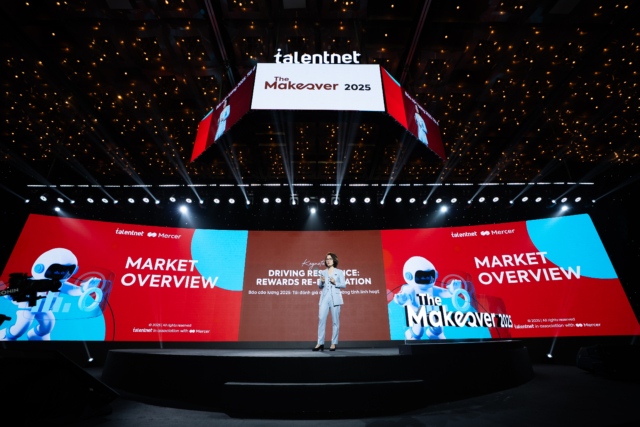AI For Business Growth: How Companies Are Leveraging AI To Stay Competitive

Jul 27, 2025
Last updated on Jul 28, 2025
AI for business growth is no longer a future trend. It drives real economic results today. Since 2019, businesses adopting AI have grown by 270%. 94% of business leaders say it's critical for success over the next five years. The AI industry will jump from $86.9 billion in 2022 to $407 billion by 2027. Yet many companies still hesitate. They stick to manual processes while competitors move ahead. Companies that don't adapt face real risks: market stagnation, poor operations, and losing competitive ground.

Key takeaways
- Companies using AI extensively report 72% high productivity rates vs. 55% for limited users
- AI for business growth delivers clear ROI through document automation – logistics firms save 30 person-months on processing
- Healthcare AI will save $150 billion annually by 2026, while construction AI stops costly errors before they happen
Technology moves fast in modern business operations. Using old manual processes now hurts your profits. Over half of all companies (55%) already use AI actively. Leaders who use it extensively report 72% high productivity compared to 55% for those with limited use. The advantages of AI in business are clear for those ready to act.
Real-world applications span every major industry, from logistics and construction to healthcare and customer service. These implementations share common threads: they eliminate time-consuming manual work, reduce costly errors, and free human talent for higher-value strategic tasks. Understanding how companies are using AI reveals concrete paths to competitive advantage.
1. Streamlining core operations with document automation
Global shipping and logistics companies face massive paperwork for international trade. AI systems now handle this automatically. They recognize document types, pull data from invoices and shipping papers, and then fill databases without human help. This cuts the manual work that used to take countless employee hours.
The return on investment is clear. Logistics company Super Cargo shows AI’s real power. Before AI, they struggled with broken information systems. They get over 4,000 purchase invoices monthly. Only 40% of the data was entered automatically. After using AI automation, they eliminated manual data entry completely. They gained full control over fare validation from partners and suppliers.
Super Cargo’s results:
- Validated over 50,000 fare and travel documents (June 2021 to February 2022)
- Saved 30 person-months of labor
- Eliminated manual data entry entirely
Modern AI systems also predict problems. They study past data patterns to spot potential bottlenecks before they happen. This lets companies adjust workflows early for smoother operations. This mix of speed, accuracy, and prediction helps shipping companies handle complex logistics with more confidence. These proven business innovation strategies strengthen their competitive edge in a tough market.

2. Improving accuracy and reducing costs in construction
Construction companies use AI as a powerful quality control tool. It solves one of their biggest problems: costly errors and rework. AI tools automatically scan and check construction drawings against actual projects. These systems spot problems and inconsistencies with high accuracy and speed. They find issues that human reviewers might miss or take much longer to discover.
This proactive approach changes how construction works. Instead of finding structural problems after project completion – when fixes cost much more – AI finds and addresses problems during construction. The technology predicts potential structural issues. It ensures contractors fix problems while building is still in progress.
The business impact goes beyond just reducing errors. Better safety protocols protect workers and reduce liability. Improved structural quality enhances long-term project value and client satisfaction. Most importantly, cutting costly errors and resource waste directly improves project margins and timelines. This demonstrates how technology drives business innovation across traditional industries.
3. Enhancing customer experience and efficiency
Customer service operations are changing through AI platforms that support human agents. These smart systems analyze incoming customer questions in real time. They check them against large databases of frequently asked questions and past interactions. The AI then suggests the best information and responses to customer service representatives. It serves as a valuable “check” that ensures accuracy and consistency.
This technology cuts response times dramatically while improving interaction quality. Agents spend less time searching for information. They focus more on complex problem-solving that needs human judgment and empathy. The AI learns and improves from each interaction, becoming more accurate and helpful over time.
The business impact extends far beyond efficiency gains:
- 85% of customer interactions will be managed without human help by 2025
- 50%+ increase in leads for companies using AI in sales
- 60-70% reduction in call times
- 40-60% cost reductions
This transformation ensures customers get faster, more accurate support while freeing human resources for strategic initiatives. Companies can measure the impact of innovation on business performance through these concrete metrics.

4. Driving innovation in complex industries like healthcare
Healthcare shows AI’s most compelling potential. It demonstrates how artificial intelligence can help businesses gain a competitive advantage while improving service quality and driving massive cost savings. AI is changing patient care through advanced diagnostic capabilities. It enables earlier and more accurate detection of diseases, including cancer and heart conditions. These early detection capabilities dramatically increase the chances of successful treatment and better patient outcomes.
Hospitals use AI-powered predictive analytics to forecast patient admissions and identify at-risk patients before critical situations develop. This prediction capability enables better resource allocation. It ensures that staffing levels and equipment availability are appropriate when needed most. Healthcare providers can intervene early, potentially preventing emergencies and reducing overall treatment costs.
On the operational side, AI automates numerous administrative tasks that traditionally consumed significant staff time. Scheduling appointments, processing billing information, and ensuring document compliance now happen automatically. This allows healthcare professionals to focus primarily on patient welfare rather than paperwork. This optimization improves patient flow throughout facilities, reduces wait times, and enhances the overall patient experience.
The financial implications are huge. AI technologies in healthcare are expected to achieve $150 billion in potential annual savings by 2026. This significant cost reduction, combined with improved patient outcomes and operational efficiency, demonstrates why healthcare organizations that adopt AI gain substantial competitive advantages. Understanding the role of innovation in business growth becomes critical for healthcare leaders.
The future of AI in business belongs to those who use AI’s power to work smarter and faster. These examples demonstrate real-world applications that deliver measurable returns today, not future concepts. You cannot afford to let competitors master these efficiencies while you wait. The advantages of AI in business are clear, but implementation requires strategic planning. Consider partnering with expert HR consulting services to navigate the workforce transformation that AI adoption brings. Challenge your leadership team: Which proven AI applications could solve your most pressing operational bottlenecks? The role of HR in innovation will be crucial as you build teams capable of driving AI for business growth.
Don’t navigate this transformation alone. Join industry leaders at The Makeover 2025: SAILING AHEAD, where you’ll discover practical strategies for “mastering HumAIn workforce” and explore real-world case studies of AI driving business growth across sectors. This isn’t just another conference—it’s your roadmap to staying competitive in the AI-driven economy.
The time for planning is over. The time for action is now.

Solve your HR problems!
6th Floor, Star Building, 33 Mac Dinh Chi, Saigon Ward, Ho Chi Minh city, Vietnam




